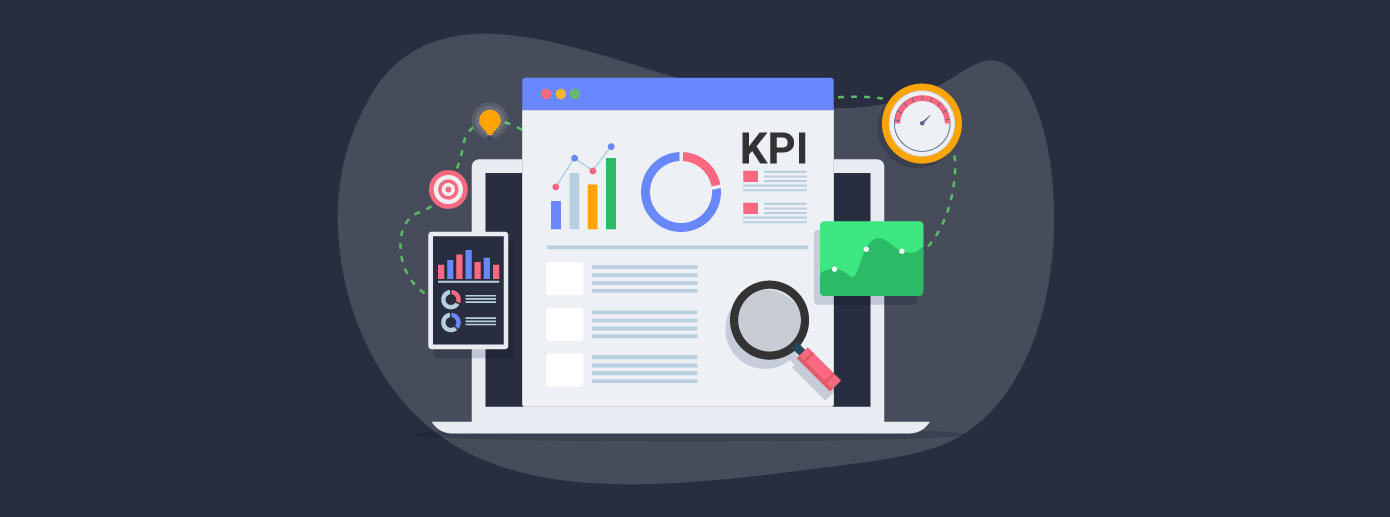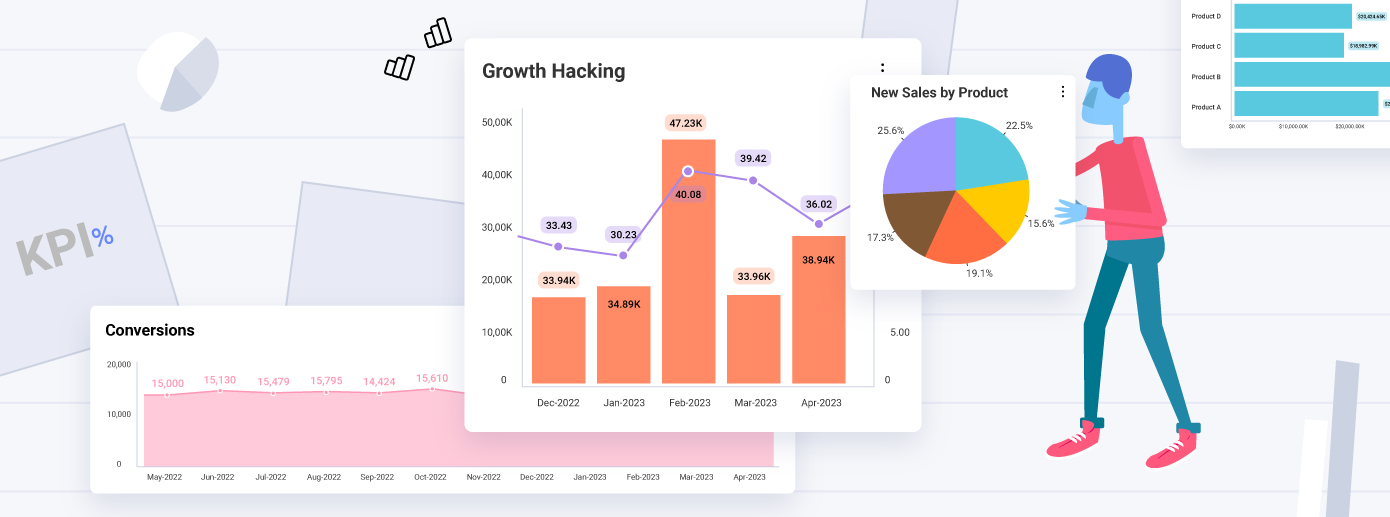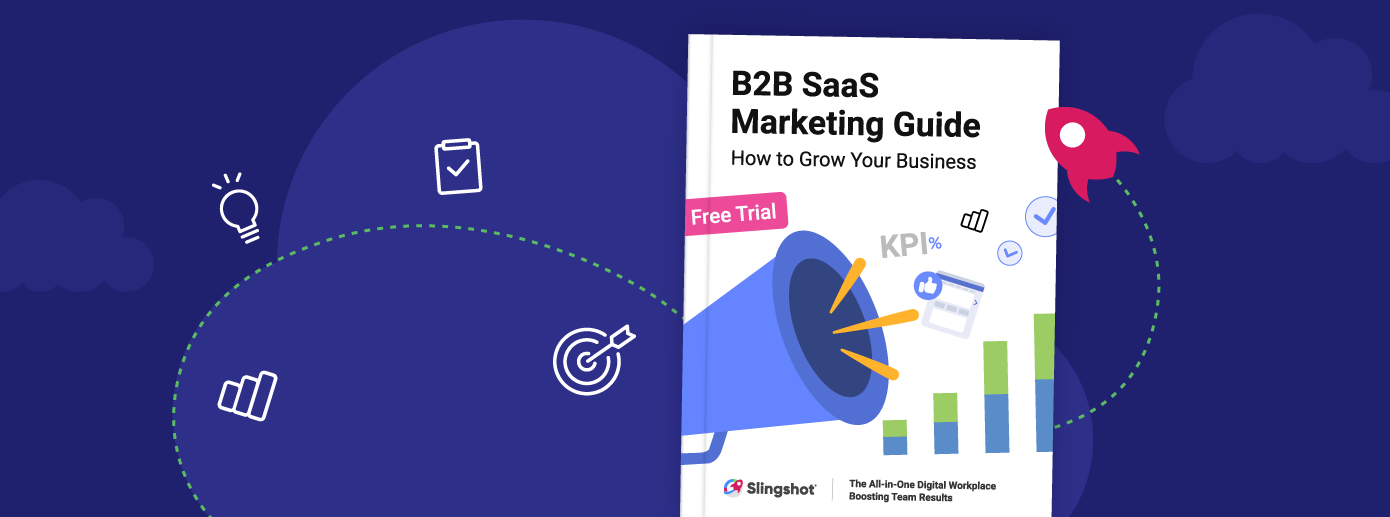
What is Operational Analytics and Why Should You Use It
Operational analytics is like having a superpower that lets you peek into the hidden world of data and uncover insights that can supercharge your business operations. It's like having a crystal ball, but instead of predicting the future, it helps you understand the present and make data-driven decisions that keep your business running like a well-oiled machine.
Executive Summary:
Operational analytics is like having a superpower that lets you peek into the hidden world of data and uncover insights that can supercharge your business operations. It's like having a crystal ball, but instead of predicting the future, it helps you understand the present and make data-driven decisions that keep your business running like a well-oiled machine.
Data is the key to success. We say it so often, and yet, it never gets old. In fact, data is one thing in today’s world that gets more innovative and current every day. From sales figures and customer interactions to supply chain operations and employee performance, organizations generate and collect vast data daily.
But data alone is not enough. Businesses need to analyze and interpret data effectively to gain meaningful insights and make informed decisions. That’s where operational analytics comes in.
So, what exactly is operational analytics? Read about that and much more in this article.
What Is Operational Analytics?
In a nutshell, operational analytics is the process of using data and analytical tools to monitor, measure, and optimize an organization’s operations in real time. While traditional analytics focuses on historical data, operational analytics allows organizations to gain insights and take action at the moment – as events unfold.
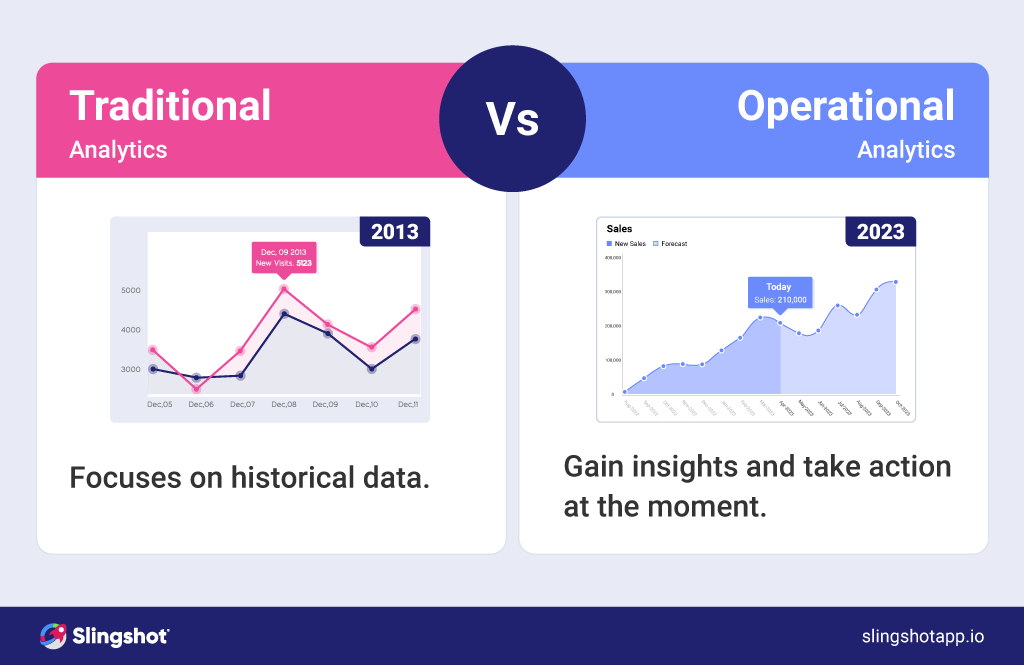
Here are a few more essential details about OA.
- It leverages data from various sources, such as transactional databases, social media, and external datasets, to uncover patterns, trends, and anomalies
- Advanced analytics techniques, including machine learning and predictive modeling, are used to analyze the data and generate actionable insights
- Through those insights (analysis) businesses can optimize their operations, improve efficiency, reduce costs, enhance customer experiences, and gain a competitive advantage.
Operational analytics is like having a superpower that lets you peek into the hidden world of data and uncover insights that can supercharge your business operations. It’s like having a crystal ball, but instead of predicting the future, it helps you understand the present and make data-driven decisions that keep your business running like a well-oiled machine. ОА is a trusty sidekick that helps you navigate the complex business operations world and confidently make decisions.
Why Is Operational Analytics Important?
As businesses navigate the ever-changing landscape of the modern world, operational analytics is becoming increasingly important. So why exactly is that?
Operational analytics is like having a data-driven sixth sense that helps businesses:
- Мake smarter decisions
- Оptimize processes
- Achieve operational excellence
With operational analytics, every team can analyze data much faster, see otherwise invisible patterns, and extract insights that can leapfrog your business ahead of the competition.
Imagine you’re running a product-oriented business, and your sales are plummeting. Without operational analytics, you might feel like you’re groping in the dark, desperately trying to figure out what’s going wrong.
But with operational analytics, you can dig into the data and discover that sales are down because your engagements have shifted, and customers now prefer other product types. With this insight, you can quickly adapt your product, features, and marketing strategies and turn the situation around.
Or let’s take another example. You’re managing a manufacturing plant, and production costs are skyrocketing. Without operational analytics, you might be scratching your head, wondering where the inefficiencies are lurking. But with operational analytics, you can analyze data from various sources, such as machine sensors, production logs, and maintenance records, and identify bottlenecks in the production process. You can optimize your workflow, reduce downtime, and lower costs, making your CFO jump for joy!
Operational analytics leverages data from various sources, such as:
- Transactional databases
- Sensor data
- Social media
- External datasets
Advanced analytics techniques, including machine learning and predictive modeling, are used to analyze the data and generate actionable insights.
Operational Analytics Benefits
So, why should you use operational analytics in your organization? Here are some compelling benefits:
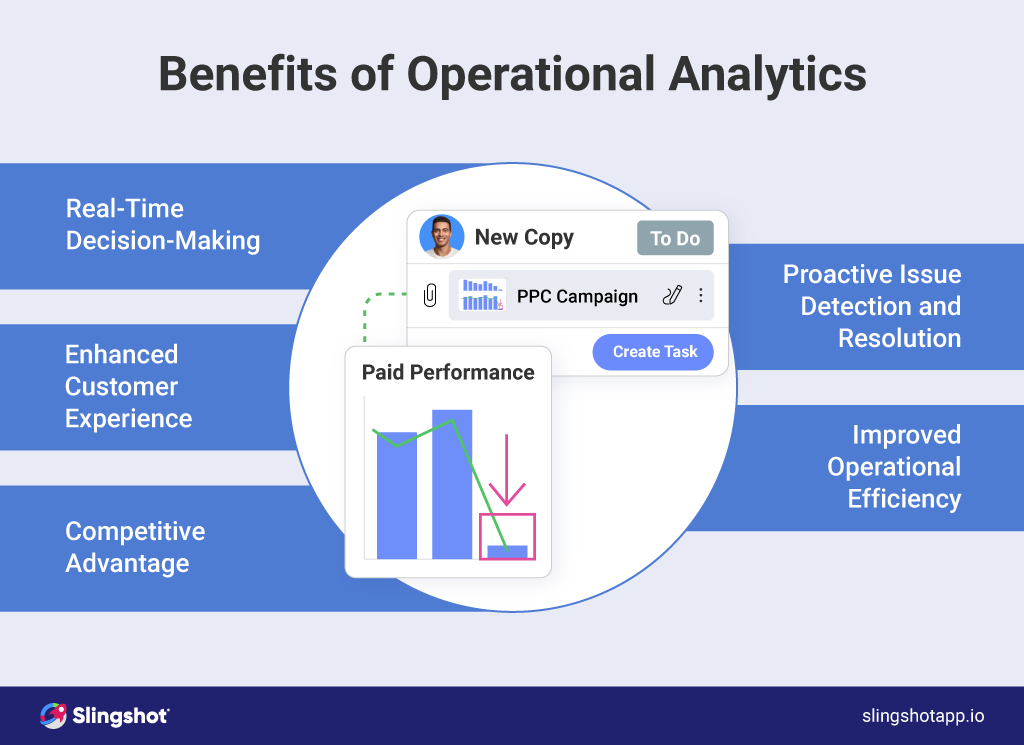
Real-Time Decision-Making
OA allows organizations to make decisions in real-time based on up-to-date data. This helps businesses respond quickly to changing market conditions, customer demands, or operational issues.
Proactive Issue Detection and Resolution
Use OA to detect anomalies, outliers, or performance issues in real time. That way, you can proactively identify and resolve problems before they escalate and impact operations or customer satisfaction. For instance, a manufacturing plant can use operational analytics to monitor production processes and identify potential equipment failures, reducing downtime and increasing productivity.
Enhanced Customer Experience
It enables businesses to analyze customer data in real time and personalize interactions. This helps organizations deliver targeted offers, recommendations, or promotions to customers, improving customer satisfaction and loyalty.
Improved Operational Efficiency
Operational analytics helps businesses optimize their operations by identifying inefficiencies or bottlenecks in real-time. So with it, you can make more efficient data-driven decisions to streamline processes, reduce costs, and increase productivity. For instance, a logistics company can use operational analytics to optimize the routing and scheduling of delivery trucks to minimize fuel costs and delivery time.
Competitive Advantage
You get a competitive edge by quickly adapting to changing market conditions and making informed decisions to outperform your rivals.
Operational Analytics: Use Cases and Examples
From improving supply chain efficiency to enhancing customer service, operational analytics transforms how businesses operate and make decisions. Let’s explore some use cases and examples that illustrate the versatility and impact of OA.
Supply Chain Optimization
Businesses can optimize their supply chain by analyzing data from multiple sources, such as sales, inventory, transportation, and demand forecasts. For example, a retail company can use operational analytics to identify the optimal inventory levels for each store based on factors like historical sales data, seasonal trends, and customer preferences. This can reduce stockouts, overstock situations, and transportation costs, improving customer satisfaction and profitability.
Predictive Maintainance
Operational analytics can enable predictive maintenance, which involves using data and analytics to predict when equipment or machinery is likely to fail, allowing proactive maintenance to be performed before costly breakdowns occur. For instance, a manufacturing plant can leverage operational analytics to monitor machine sensors in real time, detect anomalies, and trigger maintenance alerts, preventing unexpected downtime, reducing maintenance costs, and prolonging the lifespan of the equipment.
Customer Experience Optimization
Operational analytics can help businesses optimize the customer experience by analyzing data from various touchpoints, such as sales transactions, customer interactions, social media, and feedback.
Fraud Detection
Operational analytics can be used to detect fraudulent activities by analyzing data for unusual patterns, behaviors, or anomalies. For instance, a financial institution can use operational analytics to analyze transaction data and identify potential fraud, such as unusual spending patterns, unauthorized account access, or suspicious transactions.
What Should You Look for In an Operational Analytics Tool?
When choosing operational analytics tools for your organization, it’s significant to consider several key factors.
Here are some things to look for:
Real-Time Data Processing
Analyzing data in real-time helps companies gain insights and take action as events unfold. Look for tools with robust real-time data processing capabilities, including the ability to ingest and analyze data in real-time from various sources, handling large volumes of data and processing it quickly to provide timely insights.
Data Visualization
Look for tools that offer interactive and customizable data visualization features, such as dashboards and reports, to help you easily understand and communicate the findings from your data analysis. The tool should also provide the ability to share insights with stakeholders and your team in a user-friendly format.
Integration with Data Sources
Operational analytics tools must integrate seamlessly with your organization’s existing data sources and systems to enable smooth data flow and analysis. Look for tools with integration capabilities with various data sources, such as databases, APIs, and third-party applications.
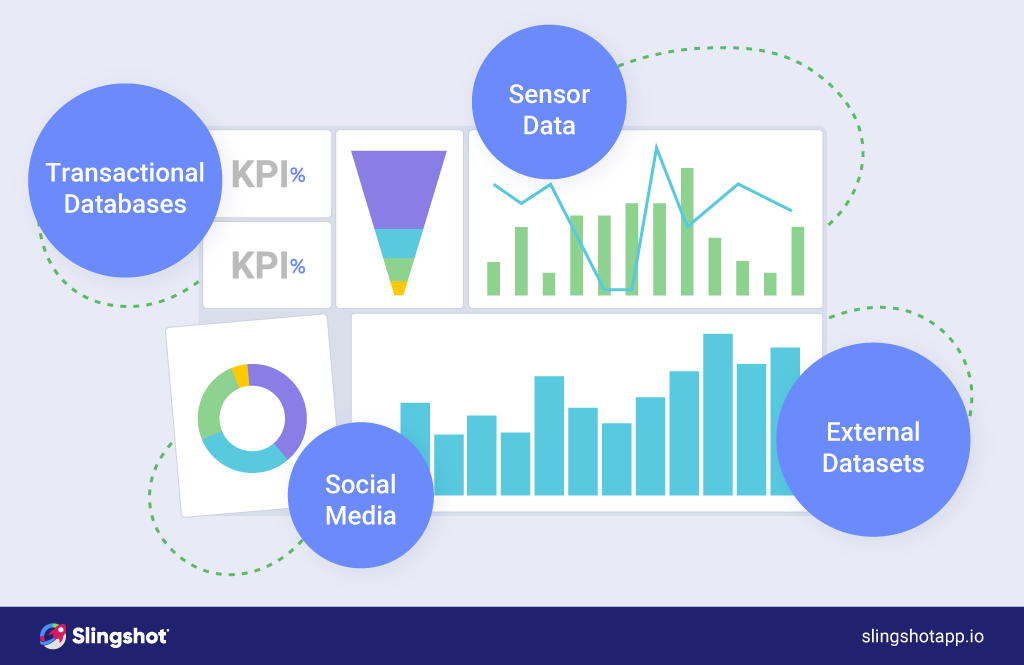
Ease of Use
Always look for user-friendly and accessible to different levels of users, including business users and data analysts. Look for tools that offer intuitive interfaces, easy-to-use features, and clear documentation to facilitate adoption and usage across your organization.
Security and Data Privacy
Data security and privacy are critical considerations in any analytics tool. Ensure your tool provides robust security features, such as encryption, authentication, and authorization, to protect your data from unauthorized access or breaches. It should also comply with relevant data privacy regulations, such as GDPR or HIPAA, to ensure the confidentiality and integrity of your data.
Why Slingshot
Slingshot is an all-in-one digital workplace that provides easy-to-use analytics features. We simplify collaboration by incorporating modern project and task management, file management, chat, and data analytics all within one app.
In Slingshot, you call to pull data from your favorite data sources and build beautiful visualizations in dashboards, which are then easily read, analyzed, shared, and discussed with your team. Never has data been more available and accessible for teams to use, taking operational analytics to another level.
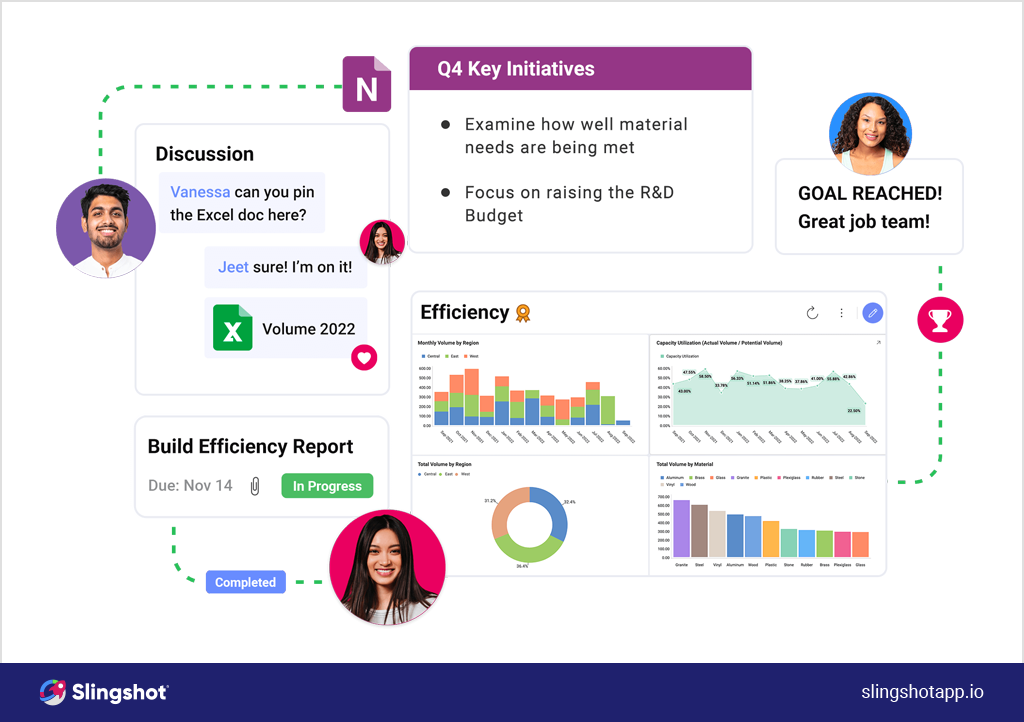
Slingshot lets users convert data into different charts and graphics, so users can easily identify trends, compare performance, and make decisions based on what they learn, so data is flawlessly integrated into the everyday workflow.
Related Articles
Ready to grow your business 10x with AI decision-making?
Request a Free Demo of SlingshotSHARE THIS POST




 Return to Blog
Return to Blog